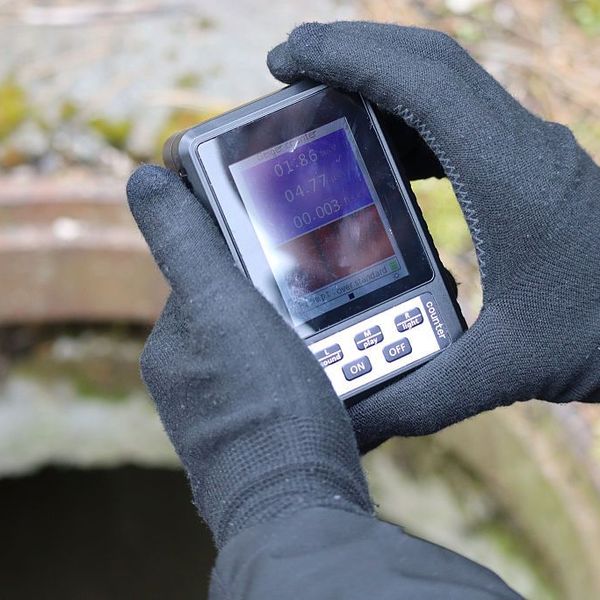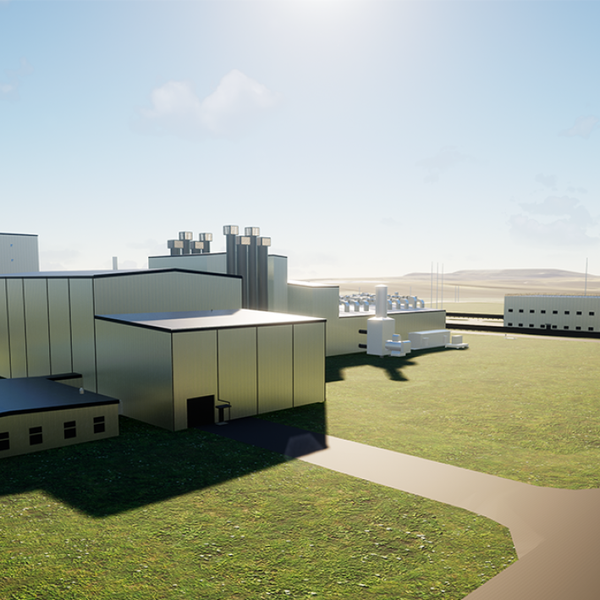Temperature Soars Mysteriously Inside Fukushima Nuclear Reactor
Also: Japan's Nuclear Exclusion Zone Shows Few Signs of Life
The temperature of Reactor #2 at Japan's stricken Fukushima Daiichi nuclear plant has soared overnight and remained mysteriously high Monday, despite more water being pumped through it.
On January 27th, the reactor's internal temperature was 113o F, Monday the temperature soared to 164o F. Japanese authorities require that the reactor temperature remain below 176o F.
* * *
Japan's NHK TV reports:
The operator of the Fukushima Daiichi nuclear plant says the temperature in the No.2 reactor remains high despite the injection of additional water.
A thermometer at the bottom of the reactor showed 73.3 degrees Celsius on Monday morning. It was around 45 degrees on January 27th and 71.7 degrees at 4 PM on Sunday.
Tokyo Electric Power Company began injecting 10.6 tons of water per hour from around 1:30 AM on Monday. That's one ton more per hour than before.
The utility says 2 other thermometers placed at the bottom of the reactor have been giving readings of about 44 degrees.
It says the flow of water in the reactor may have changed after plumbing work, causing difficulties in cooling the nuclear fuel.
In December last year, the government and TEPCO declared the 3 reactors at the Fukushima Daiichi plant had been successfully put into a state of cold shutdown as their temperatures had fallen below 100 degrees. But the situation inside the reactors remains unknown.
* * *
Japan's Nuclear Exclusion Zone Shows Few Signs of Life
ABC News is reporting:
What's most striking about Japan's nuclear exclusion zone, is what you don't see. There are no people, few cars, no sign of life, aside from the occasional livestock wandering empty roads.
Areas once home to 80,000 people are now ghost towns, frozen in time.Areas once home to 80,000 people are now ghost towns, frozen in time. Homes ravaged from the powerful earthquake that shook this region nearly a year ago, remain virtually untouched. Collapsed roofs still block narrow streets. Cracked roads, make for a bumpy ride.
In seaside communities, large fishing boats line the side of the road, next to piles of debris. Abandoned cars, dot otherwise empty fields. It's a scene reminiscent of tsunami-battered prefectures Miyagi and Iwate, last March - except those communities have cleaned up a significant amount of the debris since, in preparation for rebuilding efforts. [...]
In the the town of Namie, we met Masami Yoshizawa, a rancher who has defied government orders to euthanize more than 200 of his cows. His cattle, raised for premium wagyu beef, used to fetch $13,000 a head. Now they are contaminated with cesium.
Yoshizawa witnessed the reactor explosions from his farm, located just 9 miles from the plant. Radiation concerns forced he and fellow ranchers to evacuate soon after - his, boss opting to unleash all of the cows, thinking he would never return.
Yoshizawa said he couldn't abandon the cattle, completely. He obtained a permit to re-enter the exclusion zone, so he could feed the animals. He's been driving an hour and a half from his temporary home every day since, to look after them.
"The government didn't even try to save the animals," he told me. "They just wanted to kill them. I am filled with rage."
# # #
An Urgent Message From Our Co-Founder
Dear Common Dreams reader, The U.S. is on a fast track to authoritarianism like nothing I've ever seen. Meanwhile, corporate news outlets are utterly capitulating to Trump, twisting their coverage to avoid drawing his ire while lining up to stuff cash in his pockets. That's why I believe that Common Dreams is doing the best and most consequential reporting that we've ever done. Our small but mighty team is a progressive reporting powerhouse, covering the news every day that the corporate media never will. Our mission has always been simple: To inform. To inspire. And to ignite change for the common good. Now here's the key piece that I want all our readers to understand: None of this would be possible without your financial support. That's not just some fundraising cliche. It's the absolute and literal truth. We don't accept corporate advertising and never will. We don't have a paywall because we don't think people should be blocked from critical news based on their ability to pay. Everything we do is funded by the donations of readers like you. Will you donate now to help power the nonprofit, independent reporting of Common Dreams? Thank you for being a vital member of our community. Together, we can keep independent journalism alive when it’s needed most. - Craig Brown, Co-founder |
The temperature of Reactor #2 at Japan's stricken Fukushima Daiichi nuclear plant has soared overnight and remained mysteriously high Monday, despite more water being pumped through it.
On January 27th, the reactor's internal temperature was 113o F, Monday the temperature soared to 164o F. Japanese authorities require that the reactor temperature remain below 176o F.
* * *
Japan's NHK TV reports:
The operator of the Fukushima Daiichi nuclear plant says the temperature in the No.2 reactor remains high despite the injection of additional water.
A thermometer at the bottom of the reactor showed 73.3 degrees Celsius on Monday morning. It was around 45 degrees on January 27th and 71.7 degrees at 4 PM on Sunday.
Tokyo Electric Power Company began injecting 10.6 tons of water per hour from around 1:30 AM on Monday. That's one ton more per hour than before.
The utility says 2 other thermometers placed at the bottom of the reactor have been giving readings of about 44 degrees.
It says the flow of water in the reactor may have changed after plumbing work, causing difficulties in cooling the nuclear fuel.
In December last year, the government and TEPCO declared the 3 reactors at the Fukushima Daiichi plant had been successfully put into a state of cold shutdown as their temperatures had fallen below 100 degrees. But the situation inside the reactors remains unknown.
* * *
Japan's Nuclear Exclusion Zone Shows Few Signs of Life
ABC News is reporting:
What's most striking about Japan's nuclear exclusion zone, is what you don't see. There are no people, few cars, no sign of life, aside from the occasional livestock wandering empty roads.
Areas once home to 80,000 people are now ghost towns, frozen in time.Areas once home to 80,000 people are now ghost towns, frozen in time. Homes ravaged from the powerful earthquake that shook this region nearly a year ago, remain virtually untouched. Collapsed roofs still block narrow streets. Cracked roads, make for a bumpy ride.
In seaside communities, large fishing boats line the side of the road, next to piles of debris. Abandoned cars, dot otherwise empty fields. It's a scene reminiscent of tsunami-battered prefectures Miyagi and Iwate, last March - except those communities have cleaned up a significant amount of the debris since, in preparation for rebuilding efforts. [...]
In the the town of Namie, we met Masami Yoshizawa, a rancher who has defied government orders to euthanize more than 200 of his cows. His cattle, raised for premium wagyu beef, used to fetch $13,000 a head. Now they are contaminated with cesium.
Yoshizawa witnessed the reactor explosions from his farm, located just 9 miles from the plant. Radiation concerns forced he and fellow ranchers to evacuate soon after - his, boss opting to unleash all of the cows, thinking he would never return.
Yoshizawa said he couldn't abandon the cattle, completely. He obtained a permit to re-enter the exclusion zone, so he could feed the animals. He's been driving an hour and a half from his temporary home every day since, to look after them.
"The government didn't even try to save the animals," he told me. "They just wanted to kill them. I am filled with rage."
# # #
The temperature of Reactor #2 at Japan's stricken Fukushima Daiichi nuclear plant has soared overnight and remained mysteriously high Monday, despite more water being pumped through it.
On January 27th, the reactor's internal temperature was 113o F, Monday the temperature soared to 164o F. Japanese authorities require that the reactor temperature remain below 176o F.
* * *
Japan's NHK TV reports:
The operator of the Fukushima Daiichi nuclear plant says the temperature in the No.2 reactor remains high despite the injection of additional water.
A thermometer at the bottom of the reactor showed 73.3 degrees Celsius on Monday morning. It was around 45 degrees on January 27th and 71.7 degrees at 4 PM on Sunday.
Tokyo Electric Power Company began injecting 10.6 tons of water per hour from around 1:30 AM on Monday. That's one ton more per hour than before.
The utility says 2 other thermometers placed at the bottom of the reactor have been giving readings of about 44 degrees.
It says the flow of water in the reactor may have changed after plumbing work, causing difficulties in cooling the nuclear fuel.
In December last year, the government and TEPCO declared the 3 reactors at the Fukushima Daiichi plant had been successfully put into a state of cold shutdown as their temperatures had fallen below 100 degrees. But the situation inside the reactors remains unknown.
* * *
Japan's Nuclear Exclusion Zone Shows Few Signs of Life
ABC News is reporting:
What's most striking about Japan's nuclear exclusion zone, is what you don't see. There are no people, few cars, no sign of life, aside from the occasional livestock wandering empty roads.
Areas once home to 80,000 people are now ghost towns, frozen in time.Areas once home to 80,000 people are now ghost towns, frozen in time. Homes ravaged from the powerful earthquake that shook this region nearly a year ago, remain virtually untouched. Collapsed roofs still block narrow streets. Cracked roads, make for a bumpy ride.
In seaside communities, large fishing boats line the side of the road, next to piles of debris. Abandoned cars, dot otherwise empty fields. It's a scene reminiscent of tsunami-battered prefectures Miyagi and Iwate, last March - except those communities have cleaned up a significant amount of the debris since, in preparation for rebuilding efforts. [...]
In the the town of Namie, we met Masami Yoshizawa, a rancher who has defied government orders to euthanize more than 200 of his cows. His cattle, raised for premium wagyu beef, used to fetch $13,000 a head. Now they are contaminated with cesium.
Yoshizawa witnessed the reactor explosions from his farm, located just 9 miles from the plant. Radiation concerns forced he and fellow ranchers to evacuate soon after - his, boss opting to unleash all of the cows, thinking he would never return.
Yoshizawa said he couldn't abandon the cattle, completely. He obtained a permit to re-enter the exclusion zone, so he could feed the animals. He's been driving an hour and a half from his temporary home every day since, to look after them.
"The government didn't even try to save the animals," he told me. "They just wanted to kill them. I am filled with rage."
# # #

